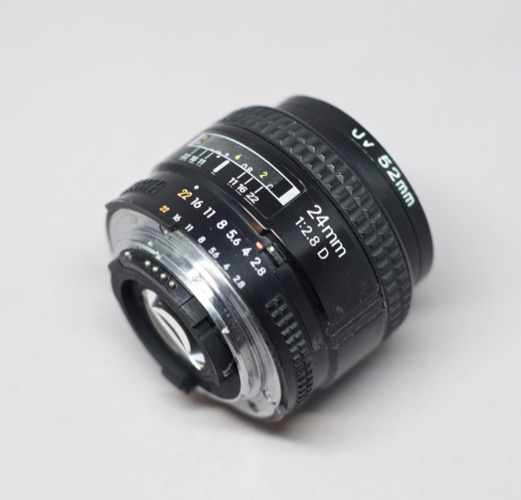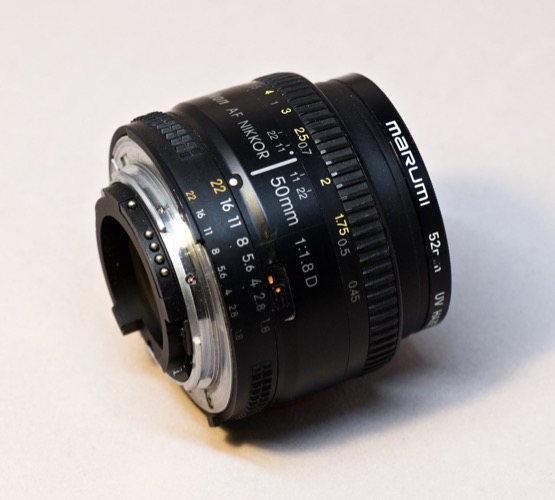|
|
Cassandra - Black & White and Kodak BrownieBy Graham K. Rogers
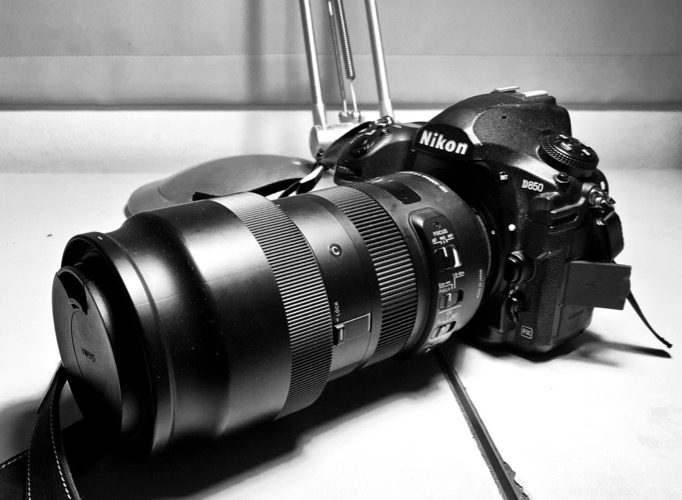 Nikon D850 with Sigma telephoto lens
For a 3- or 4-year old child, some of his explanations were a little too much, although the purpose of the yellow filter to bring out the sky did sink in. Ilford calls it "the classic first choice", so perhaps he did know something. I have come across many people since then who would overwhelm me with the importance of ASA (now ISO) and F numbers, although some of these - for all their technical knowledge - were not that good at taking photographs. My own early photography began with a cheap plastic device that took 2 pictures from one frame. Some output was reasonable, including a close shot of the Queen Mother around 1960. Not long after, I found a Box Brownie at a sale for one shilling (now 5p or 6 cents). I enjoyed using that for a while, although I have no idea where it ended up.
I also favour 645 Pro which originally had TIFF output until Apple provided the RAW API. The developer (Michael Hardaker) was indirectly responsible for bringing me back to film with his 6x6, 6x7, and ProShot apps before 645 Pro. These apps use the concept of film so the user has to think more carefully while taking a shot. I initially looked at Rolleiflex cameras before picking up a Hasselblad 500C/M which I used along with a Nikon D7000. More recently I upgraded to the Nikon D850 but also began to look at 35mm cameras, starting with Leica. These are not cheap, even when bought used. Although the camera bodies may be available for a price that is accessible to some, the cost of some lenses is astronomical. I keep looking, but the stars have not yet aligned. With the idea of 35mm firmly lodged in my brain, I looked a little wider. There are some second-hand camera shops in Bangkok, but I do not find the prices particularly suitable, so I looked online. I ended up ordering a couple of cameras through Amazon: one initially disappointing. I should have done my homework on the other, although my brief ownership ended in a self-inflicted disaster.
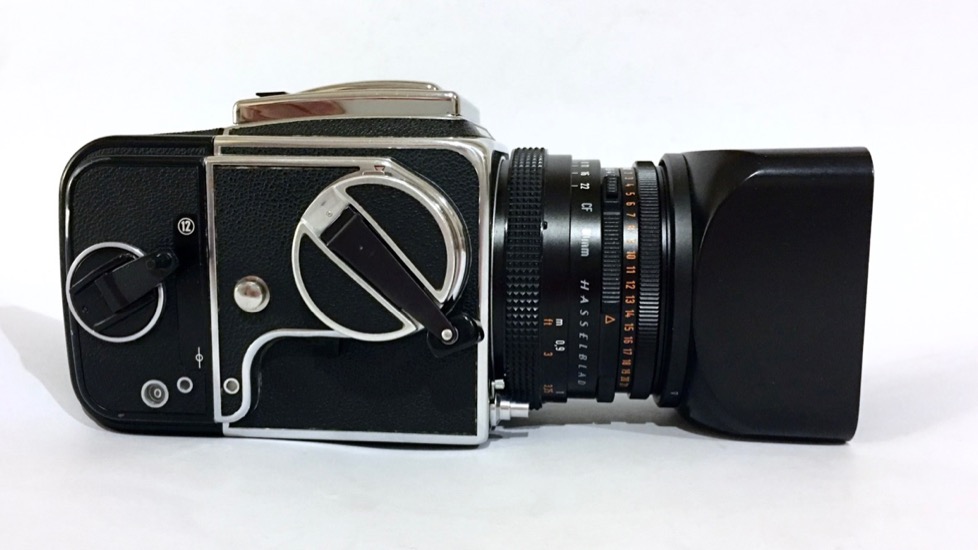
Hasselblad 500 C/MThe Hasselblad has a good pedigree and one of the all-time iconic shots - the earth from the moon - was taken with an adapted Hasselblad 500EL Data Camera with Reseau plate. There are 13 of these left on the surface of the moon. Walter Schirra had earlier taken a stripped down 500C into space in the Mercury capsule starting the relationship between NASA and Hasselblad.The medium format film creates high quality images (depending on my skills) and I find the negatives easier to handle than 35mm output in the Canon 9000F scanner I use. The all-metal body makes this rather heavy, but its modular construction means that everything can be replaced. When I bought mine, it came with a prismatic viewfinder and the 80mm Zeiss lens for 35,000 baht. I later added a 50mm Distagon lens and changed to a pop-up viewing hood: most people prefer the prismatic viewer and dump the pop-up type.
I have tried a selection of films. Ilford 125 and 400 are easy to find here, but online the selection is wider. Recent preferences have been Bergger Pancro 400 and Ilford Pan F (50 ISO), from which I have had surprisingly good results. I also tried Rollei Retro 400, which some recommend, but found that (like some Lomo films) the thinner plastic backing curls when scanning: Ilford and Bergger are more substantial.
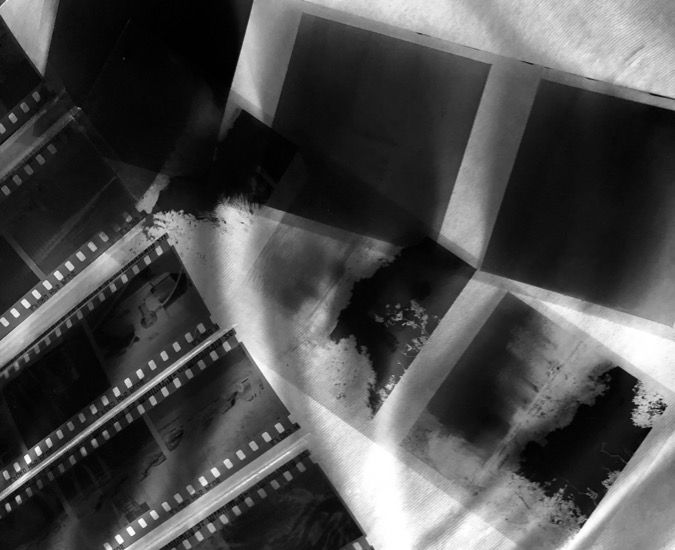 Medium format and 35mm negatives
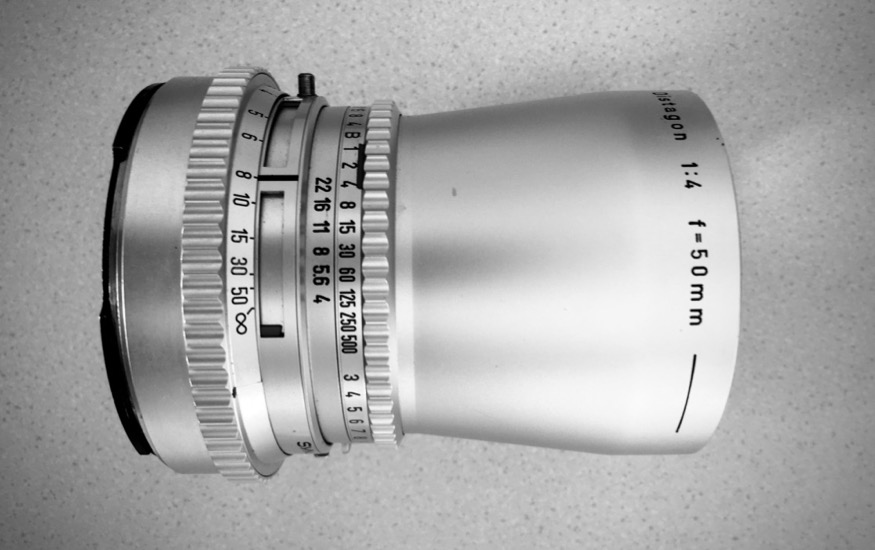 Distagon Lens
Mamiya/Sekor 1000 DTLI had in mind that I might want to try 35mm photography again and had visited some shops in Bangkok where prices seem inflated compared to E-Bay and other online sources. While I was browsing Amazon I found several used cameras on offer and one was a Mamiya. I had been aware of the larger bodies by Mamiya and Bronica which are often compared with the Hasselblad, but I had been unaware that there was a 35mm camera too. There are several, and this was a problem as the page I accessed listed the Mamiya/Sekor 1000 DTL, while showing images of Mamiya MSX 1000 and another model, both in quite god condition for the 40-plus years. The listed 1000 DTL came with a 80-200 telephoto lens. I bought this for 5,321.79 baht. Another 730 baht was charged by the courier for customs fees.Out of the box, the camera and lens felt quite substantial, but when I looked closely at the body, there were impact marks and some dents. I do not expect a used camera to be like new, but this gave me some initial concern. Although there was no battery (L44), I was able to take photographs right way, using some expired Ilford and FujiColor film a colleague bought bulk and stores in a deep freeze at the Faculty.
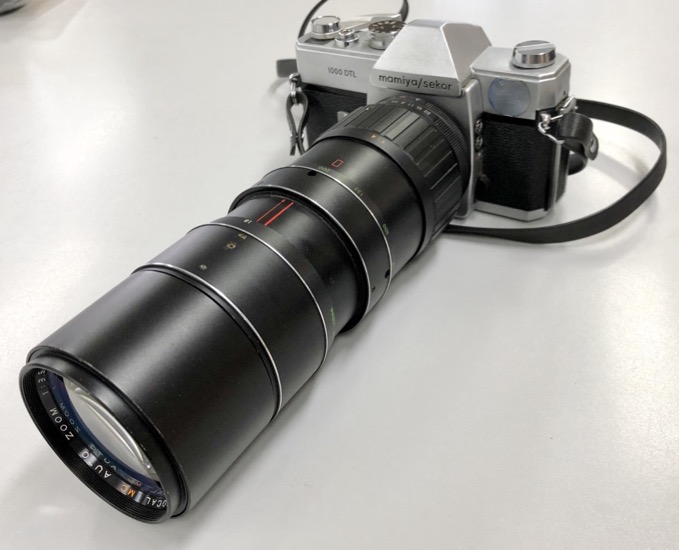 Mamiya/Sekor 35mm camera with telephoto lens
Using the skills I had picked up from using the Hasselblad (and Pocket Light Meter), I took a couple of ISO 400 rolls in the first few days (one B&W, one color). My initial concern was over light leaks, but the output was sharp and clear. When editing the color film I was able to bring out some deep reds and greens, so the camera was viable. I later pushed the device with 100 ISO Ilford and ISO 200 FujiColor. While the Ilford was nice and sharp with quite good contrast, when I got it right, output from the ISO 200 color film was less satisfying. Saturation was poor. There may be a number of reasons for this. The surprise for me was the lens. The Mamiya uses the M42 threaded system, so my Nikon lenses will not work (unless I track down an adapter). Although this telephoto lens is unbranded, it appears to be from Minolta. I have been pleased with the sharpness of the images it can produce. Coupled with the quiet shutter of the Mamiya, the relatively good output has me interested in taking this camera further. A search on e-Bay found several lenses that would be suitable. I settled on a Zeiss Jena 35mm Flektogon lens for €159 and it is on its way from Germany now.
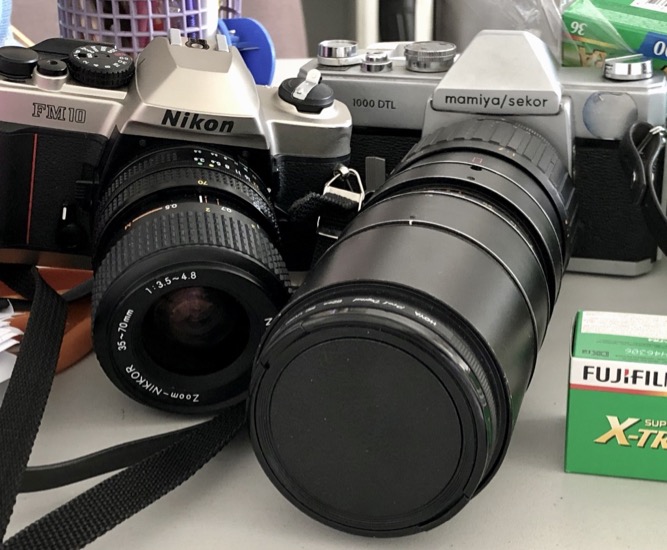 Nikon FM10 with Mamiya/Sekor 35mm camera
Nikon FM10Around the same time that I first saw the Mamiya, I also found a 35mm Nikon: the FM10. Not that there was anything wrong with the camera, but this was a case when I should have done my homework. With a lack of knowledge, I imagined that the FM10 was an evolution of the famed FM1 and FM2 from Nikon. Although there is much that is familiar in this, including the F-type lens connectors which I use on my DSLR camera, this was really an example of badge-engineering, made by Cosina in Japan. It was sold with a 35-70 mm lens, but I knew I would be able to swap that for one of my prime lenses.Out of the box, the camera was unblemished, although the lens felt cheap and plasticky. There was nothing specifically wrong with it, but I do not really like the lenses that come in kits and I am used to working with prime lenses. Like the Mamiya, I would have been able to take photographs without the battery (I used 2 x L44), but once film was loaded, the shutter appeared stuck. A couple of days later, the penny dropped. This had a parking mechanism (like the Mamiya) and once the film-advance lever was moved out slightly, I was able to press the shutter and take a photograph. The camera/lens was lighter than the Mamiya, and this in part was behind my decision to order that 35mm lens. I took a roll of 400 ISO Fuji fairly quickly and loaded a second for the weekend. I decided to take this camera, as well as the DSLR and the Hasselblad to Mahachai, where there is vibrant market and a river with sea-going ships.
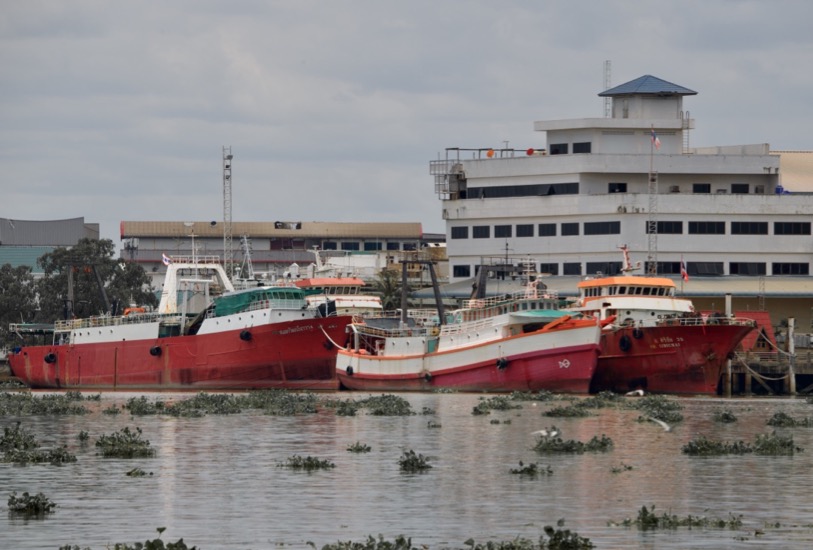 Mahachai - river scene
Testing and DisasterAlthough I have two lenses for the Hasselblad, I tend to stick with the Distagon lens, despite its awkwardness: a spring clip needs to be held down to change aperture and speed settings. I simply prefer the output from this 50mm lens. with the DSLR there is a choice of 4 lenses: Sigma 100-200; Nikkor 85mm, 50mm and 24mm. With the Sigma I now tend to leave the 85mm lens at home. I put the 24mm lens on the FM10 to start with.
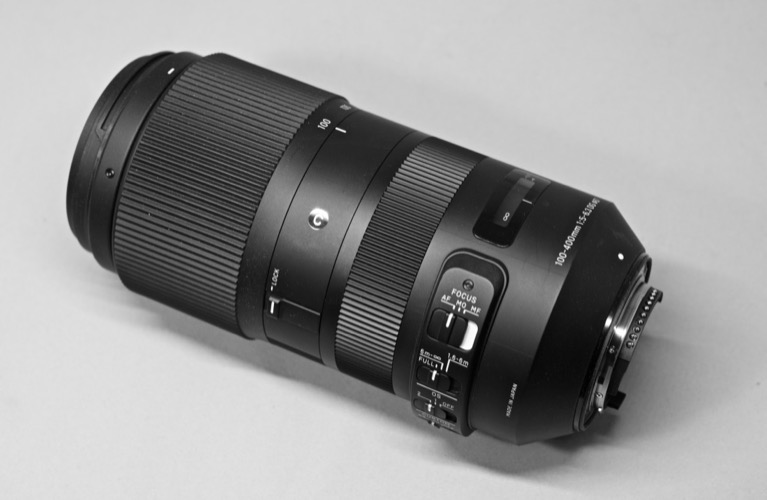 Sigma 100-400 lens
Nikkor 24mm and 50mm lenses
I think I was more concerned about the loss of the 50mm lens than the camera, not that it was at all expensive. I had bought that lens more than 15 years ago and it had served me well. I checked the internet on Monday morning and found several new examples of the same lens, with one in Thailand (Lazada) at a price some 50% less than it was originally. It was delivered to the office while I was out on Tuesday.
Graham K. Rogers teaches at the Faculty of Engineering, Mahidol University in Thailand. He wrote in the Bangkok Post, Database supplement on IT subjects. For the last seven years of Database he wrote a column on Apple and Macs. After 3 years writing a column in the Life supplement, he is now no longer associated with the Bangkok Post. He can be followed on Twitter (@extensions_th) |
|

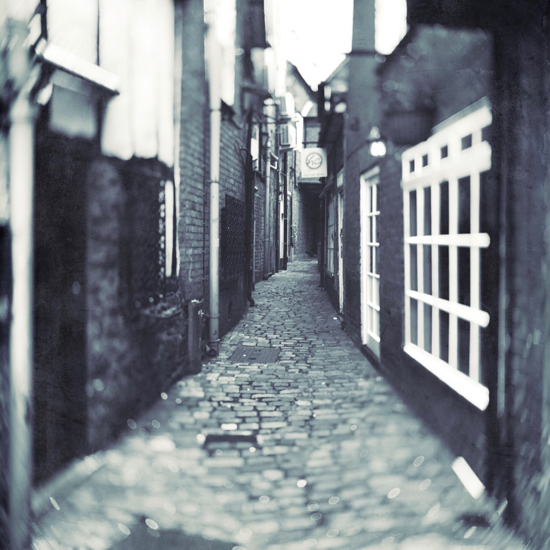
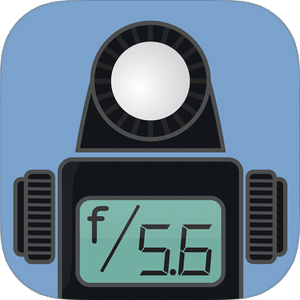 There is nothing automatic about the older Hasselblad (I have tried a modern digital version), so the process of taking a photograph is slowed down, with a need to take suitable readings from a metering device. I use
There is nothing automatic about the older Hasselblad (I have tried a modern digital version), so the process of taking a photograph is slowed down, with a need to take suitable readings from a metering device. I use 